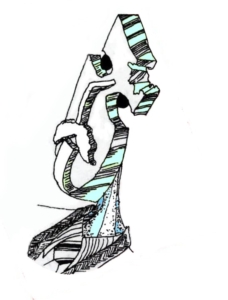Üz
1. sound-signify
Üz: (noun) surface, face
Sound-signify:
prominent form/type [–]:
vectorial tendency [ü]: (relative to) the surface of ‘dir’ [essence]
function [z]: staticity, ceasing dynamicity, stable/fixed/fixing
Sound-signify version: ([the concept] relative to the surface of ‘dir’) + ([functionally] stable/fixed)
Semantic interpretation: ([the] stable concept relative to the surface of essence)
Plain meaning: (the stable/fixed outerface [of something])
background
1
[ü]: (relative to) the surface of ‘dir’ [essence]
The sound [ü] (relative to the surface of ‘dir’) is complementary to the sound [ö] (which is relative to the depth/core of ‘dir’). We can check them with these words:
üz (face, surface)
öz (self, deepermost of essence).
Üz and Öz are from same origin. The reality of this origin is illustrated best with the graphic figures in so-called Arabic alphabet as: ر (r) and ز (z); (The same shape, without a dot resembles dynamicity while with a dot it resembles staticity, ceasing dynamicity, stability, fixedness. Seemingly one dot has got some fixing/stabilizing function.)
2
[z]: staticity, ceasing dynamicity, stable/fixed/fixing
The staticity of the sound [z] contrastingly pairs with the dynamicity of the sound [r] which are semiotically presented well in so-called Arabic alphabet graphic figures:
ر [r]: dynamic, active
ز [z]: static, ceasing dynamicity, stable/fixed/fixing
In fact, the dynamicity of ر (r) is ceased by a dot ز (z).
Üz and Ür– are from same origin.
Ürək: heart (compared with ‘üz’) which is dynamic/active and beats toward the surface.
Üz: face, surface (compared with ‘ür’) which is static/inactive/stable.
See:
kürək
